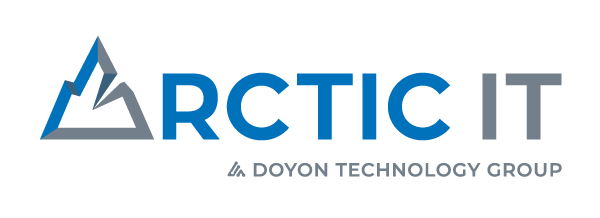The world is changing rapidly.
State and local governments continue to find ways to enhance their communities by improving air quality and reducing carbon emissions, and technology is playing a large part in this.
It’s no secret that carbon emissions have been a mushrooming problem for the past 75 years. And the issue is forcing governments and corporations to take a hard look at how their unique carbon footprint adds to this global problem. Just in the past month, several major technology companies have announced initiatives to reduce their impact on the environment.
Simply put, if we continue the path we are on now, at the end of this century, we won’t have time to turn back. The risk of the earth’s temperature rising even one more degree could translate to catastrophic results.
Which is why Microsoft has made a bold pledge: To become carbon-negative by the year 2030. Microsoft is committed to advancing the nation’s economic, environmental, and energy security for all, and this initiative is helping them achieve it.
Let me explain what that means.
First, here is a quick Carbon 101 definition: We all release carbon into the atmosphere. This has not been a problem until industrialization, where we started emitting more carbon than the earth can absorb. Think of our planet as a bank account. We have been making cash withdrawals without making savings deposits and are WAY behind in making up for this. Now, if this were something that affected you personally, to get back on track, you would need to put together a plan. You would refinance or consolidate your debt and craft a strict budget to follow to get back on track.
This is exactly what Microsoft is doing by announcing its commitment to become carbon negative, with the pledge to reduce their emissions by half of what they are now and to remove more emissions than they emit.
Now, let us review the three different ways carbon is released:
- Your daily emission – the car you drive
- The indirect emissions from daily life – traditional energy sources like electricity
- The extended emissions that must happen for supply chains to function – think about the simple process of ordering something online. The manufacturer gets the order, it ships to a distribution center, then makes its way to your home.
For Microsoft to achieve carbon-negative, they are focusing on two things:
- Technology – which translates to investing, adopting and the development of sustainable technologies to help reduce the carbon from the atmosphere.
- Nature – by planning and implementing an aggressive change in carbon emission.
How you can get started
As a leader/decision-maker in state and local government, think about how this initiative can help you achieve your environmental goals. If you position technology correctly, it will play a critical role in protecting our planet and protecting the people in our communities. Here are a few examples to get started.
Transparency
Reporting on and driving sustainability within your organization begins with the ability to quantify the carbon impact. This data is crucial for reporting existing emissions and will help drive additional decarbonization efforts. Agencies or departments can achieve estimated carbon savings by running workloads in the cloud versus on-premises or in data centers are already ahead of the curve. Considerations for measurement are related to power, connectivity and physical space. Which is why housing servers on premises, storing data, running applications, platforms and infrastructure are physically and financially demanding. This ultimately leads to a higher emissions score, so take inventory of your on-premises assets.
Efficiency
Government agencies can improve outcomes for citizens by implementing a “digital strategy” or migrating assets from on-premises to the cloud. By eliminating physical assets and optimizing your technology environment, emissions are significantly reduced. In addition, migrating to the cloud will increase your organization’s security posture, improve remote collaboration among your teams, and potentially reduce costs. And, enabling a remote workforce reduces carbon emissions from employees driving in to work each day.
Data Management
Increasing the flow of data among your unique lines of business by getting the right data to the right people the first time and connect data with environmental initiatives. In January 2020, Microsoft launched a sustainability calculator, designed to help companies measure their carbon emissions. Those responsible for reporting sustainability can now quantify the carbon impact of each Azure subscription over time and datacenter region. You can compare estimates from running your workloads in Azure versus on-premises data centers and get the crucial data for reporting decarbonization improvements.
Create a business justification for cloud migration
We’ve established that migrating to the cloud is a positive step toward reducing your carbon footprint. For your project to gain steam, perform the following:
- Build the business justification with tangible, relevant costs and returns for cloud migrations (This will focus on the ROI and technical specifications).
- Create a financial model – where will the funding come from?
- Gain internal alignment with stakeholders by firmly aligning business value and business outcomes.
- Provide a clear picture as to what changes will come with transformation.
- Campaign for executive support.
- Engage the right vendor partnership. This is where partnering with the right technology company matters.
Besides reducing your carbon footprint, here are more benefits to cloud technology
Reduce Costs – Get rid of the capital expense of building, running and maintaining on-premises infrastructure. Don’t forget the added carbon emissions from servers and other network assets and the extra cost of electricity to run it all. You’ll be saving staff hours with reducing the number of IT techs to monitor it onsite.
Enhanced Security – Microsoft invests more than $1Billion USD annually on cybersecurity, which provides fast and reliable connectivity for the growing remote workforce. Keep your sensitive data secure from those you want to keep out, and accessible for those who need to use it.
Business Continuity – A backup and disaster recovery plan is critical to keeping your data and applications protected from disruptions to your business. Built-in redundancy is also critical to ensure there is no single point-of-failure.
Why partner with Microsoft, and why does it matter?
State and Local Government (SLG) leaders make conscious choices every day that impact how they serve their constituents. By actively choosing cloud technology, they naturally reduce their carbon footprint. When government leaders focus on establishing the right public and private partnerships with organizations willing to put effort behind a bold environmental initiative, they receive:
- A partner willing to walk the walk at every layer of its infrastructure, starting with their own employees
- A partner that can influence other technology contractors to be carbon responsible
- A partner willing to pioneer sustainable technologies geared towards carbon reduction and strategies tied to the environment.
Microsoft’s suite of products drive innovation among the government community. To learn more about how these applications are creating efficiencies, check out our eBook Security and Innovation for Government Agencies.
At Arctic IT, our goal is to help you gain a deeper understanding of your current infrastructure to help drive meaningful sustainability conversations within your organization. If your team is ready to take technology on a path of environmental stewardship, please reach out to [email protected] to get started today.

By Nathan Washington, Government Account Executive at Arctic IT

